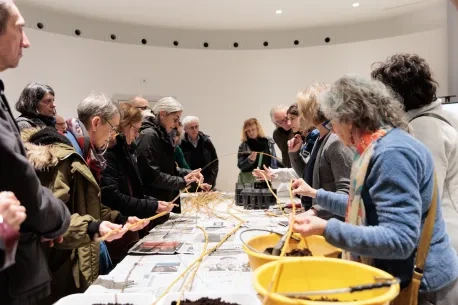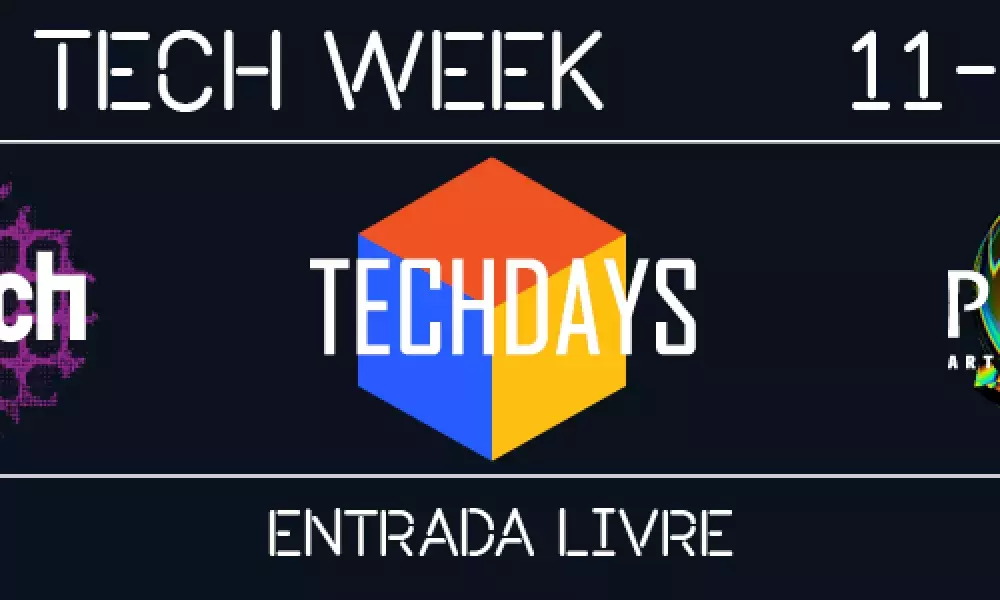
The rich agenda of the Aveiro Tech Week was composed of the events TECHDAYS Aveiro, CRIATECH and PRISMA / Art Light Tech, combining technology, art and culture through exhibitions, festivals, artistic installations, performances, conferences, laboratories and other experiences.
The opening session of ATW was attended by the Mayor of Aveiro, José Ribau Esteves, vice-Rector of the University of Aveiro, Artur Silva, the CEO of Altice Portugal, Alexandre Fonseca, and the Member of the European Parliament Manuel Fernandes, among other guests, sponsors and artists.
The session started with a guided tour to the technological and artistic installations of Aveiro Tech Week, followed by a visit to Hub Tech City and finally closed with the open ceremony at the Teatro Aveirense.
Among the numerous sessions, some of the most significant ones, belonging to the TECHDAYS AGENDA, and related to Aveiro Steam City (ASC) UIA project, are reported in this article.
TECHDAYS AVEIRO
This edition of Techdays gave visibility to the importance of technology as an accelerator of innovation in order to foster economic development and improving the quality of life of citizens.
In this context, Techdays had the ambition to bring together people, companies, research institutes and solutions of the latest technological generation in a real context, with the aim to watch demonstrations of how to live and work in the city in a new digital and connected reality. TECHDAYS workshops took place at ATLAS building. Designed by Architect Fernando Távora in 1964, it was completely renovated and refurbished. The second floor hosts the Tech Hub, where the workshops took place.
In addition to the talks, demonstrations developed by the finalist projects of the Aveiro 5G Challenges contest and the Aveiro contest projects Urban Challenges, together with activities to promote education, in particular the STEAM competencies, took place during these days.
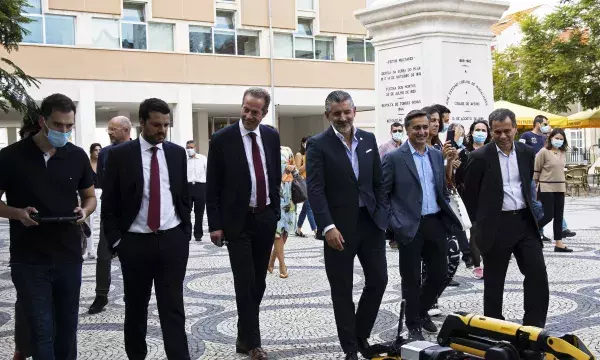
CRIATECH FESTIVAL
From October 11th to 16th 2021, Aveiro hosted a new edition of Criatech, an organized festival by Teatro Aveirense and which establishes a dialogue between digital creativity, technology and historical heritage of the city.
With a focus on diversified, experimental and quality programming, the Criatech was able to meet the general and specialized public, presenting works by authors from renowned national and international figures. The projects wanted to challenge viewers through various installations and performances. At the same time, Criatech addressed the question about the relationship and the importance of technology in society and its implications with the use of public space and other social issues.
“I came to Criatech for the second time, because I appreciated the first edition very much. The festival wants to value and stimulate the birth of artworks characterized by a participatory approach and community involvement.
The idea that is inspiring me in these days and, in part, in my artistic research, tackles the challenge to bring an alternative vision to consumerism in technology: open source, just to make an example, is a movement that demonstrate how the community can impact and demystify technology, decontextualizing it from mass production to DIY and DIT. But also, unrevealing the productive process that brings technology in our daily routines, the origin of raw materials, the commodity chain and making all these information accessible is a mean that helps to underline contradictions in this model of consumerism.
During the days of the festival there is this valuable collaboration among different artists: I was invited to mentor the 20 participants of the 2nd edition of Criatech Artistic Residences and I’ve collaborated with another artist Carla Cabanas on an interactive installation around the topic of preservation of data and information, also underling the impacts - e.g., environmental ones- of storing data nowadays (just think about the cloud!)”.
Patricia J. Reis - artist
PRISMA
The second edition of Prisma / Art Light Tech took place on October 15th and 16th.
Prisma was launched with the aim of creating a script of artistic works in the public space. Like Criatech, organized by Teatro Aveirense, this festival combined several works of contemporary art, including projections, installations and shows of sound and light, presented in various spaces in the city, with the presence of artists of international reference.
The festival is intended to bring an important contribution to the growth of cultural and creative industries (CCIs) in Aveiro, with actions that promote cooperation between creatives, students, artists and companies. Prisma also wanted to make a contribution and raise attention towards environmental issues, in particular nurturing the debate around energy efficiency with concrete proposals and demonstrators and inviting to the use of soft modes of mobility.

AVEIRO TECH CITY IN NUMBERS Oct 12th - WORKSHOP BY CEDES
In the workshop “Aveiro Tech City in Numbers” the results of the main activities implemented so far and their impact on the participants and on the city, both quantitatively and qualitatively, were presented. This was a session useful to get to know the project in a global way, where the main activities carried out since its beginning were under analysis.
A short interview with Ana Mendes and Filipa Soares from CEDES - SLIDES
Which activity within the ASC project was most successful according to the data that you collected and why?
“Looking at the numbers, Tech city bootcamps were the most successful activity carried out until now. The initiative consists of an intensive training program, dedicated to unemployed, students or employed professionals looking for new career opportunities. It aims to promote coding competences among citizens who wish to work in ICT ecosystem as Full Stack Developers.
At the end of this program, people that attended to it, entered into the labour market as developers and programmers; they not only developed technical skills, but also soft skills such as problem solving, relational capacities, communication, etc.; the training within the companies, carried out after the “frontal lessons”, worked as an accelerator. We reported 100% satisfaction form the point of view of the attendees and 75% of them found a job (even considering the pandemic).
So, strictly in terms of results, the Bootcamp is the activity that has shown the best figures (essentially quantitative) but, if we think about the multiplying effects on the region and its community in the medium and long term, there is no doubt that we recognize Tech Labs as one of the most effective initiatives.
Through this project it was possible to equip schools in Aveiro with “tech kits” and train teachers to the use of this equipment, made of different tools such as 3D printers, circuits, robots, etc., in order to provide STEAM activities to pupils.
If we compare the number of participants involved in the two activities, we are talking about 59 trainees in the three editions of the Bootcamp vs. 7,078 Primary and Secondary School teachers and students involved in the project as a whole (i.e., even in the short term, we are talking about much more far-reaching effects in the case of Tech Labs). Tech Labs also reported outstanding evaluations that we observed both in quantitative and qualitative dimensions.
Moreover, we believe that the effects of Tech Labs are multiplying in the sense that the seeds of interest, knowledge and skills for STEAM areas are being shown in children from 5-6 years old to 9-10 years old, which will guide their entire academic life and professional future… And, we should not underestimate the knock-on effects on the whole community that we have already seen in the years 2019/2020 and 2020/2021 in which children have influenced parents, who, having never accessed the internet, bought computers and started using it to access online services.
On a total of 7.078 people to be involved, in Primary Schools: 140 teachers + 2.985 students (all of the 31 Primary schools of the Municipality) will take part to these activities; in Secondary School: 34 teachers + 3.919 students (10 Schools of the Municipality) will participate. And these numbers reflect just the beginning of the investment made by Aveiro municipality in this activity. This will not only be pursued in the future, as is also meant to be implemented on a supra-municipal scale, generating multiplying effects in the region.”
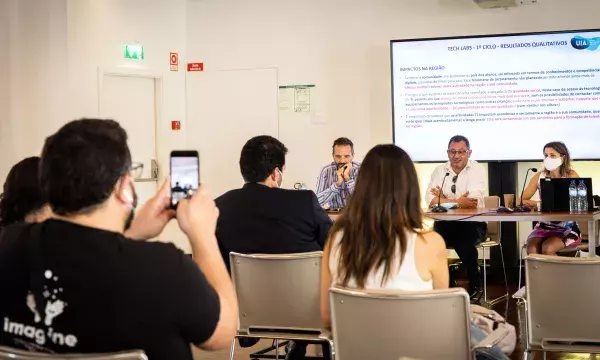
LABOUR OBSERVATORY OCT 13th - WORKSHOP BY UA AND INOVARIA
The Labour Observatory tackles the changes of the labour market, both at national and regional level and proposes a reflection on the main challenges of the employment of the future, in order to continue to address the digital transformation, as well as the recovery and resilience investments that lie ahead.
Aware of these challenges, the Labour Observatory shared the recent experience and opened a debate around the pilot training programs implemented under the ASC project.
URBAN PLATFORM OCT 13th - WORKSHOP BY ALTICE LABS
This Workshop was sponsored by Altice Labs in order to report the development of the Digital Urban Platform of ASC. The Urban Platform is a central component for data aggregation from sensors and management systems of the city infrastructure. During the session several use cases were presented and discussed.
A short interview with Joao Bastos from Altice Labs
According to your company’s vision and to your experience, can the digital urban platform deployed for ASC be exported to other local contexts?
“This platform intends to be a repository of knowledge for communities, an aggregator “data lake” of information of a large ecosystem, involving the Municipality, companies, the Academia and the citizens. When you expose all this kind of information – under secured and controlled conditions – you should ask yourself how to make the best use for it: decision making in local policies, new business opportunities etc. etc. ... But also, you ask yourself how to continuously feed this repository? What kind of agreement you need to establish with your “data suppliers” to keep information updated, and under what conditions it may be accessed or shared? Volume of data and variety of data types are of paramount importance for the success of this type of platform and legal aspect and trust on the technology may slow down its acceptance. However, if you enlarge all these questions and apply them to a larger community, by paradox, many of these issues can be overcome – you value the momentum, you gain visibility and possibly consensus, you gain a large audience and so you overcome perplexities and fears because you are offering such a powerful tool with high impacts. Altice is already establishing contact with more than 30 municipalities in order to discuss these opportunities.”
How will you manage the property issues in order to finalize the release of the platform for the city of Aveiro?
“The Municipality will be able to continue to use the platform at no cost after the project ending. Agreements about new components and functionalities are still to be discussed. We wish to continue to work and support the Municipality, especially in figuring out how to extract value from this tool and the info processed. This is the next stage, and we have to address right now.”
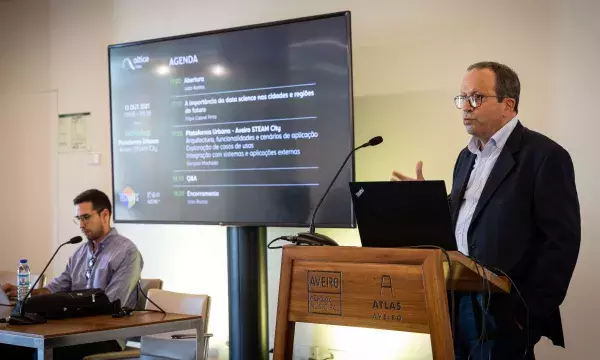
AVEIRO TECH CITY LIVING LAB OCT 14th – WORKSHOP BY IT (Telecommunication Institute)
The Telecommunications Institute, in collaboration with the partners of the European Project ASM, presented the Aveiro Tech City Living Lab. This is the first living laboratory created in Portugal, which is being used for testing and developing IoT and Smart Cities innovative solutions. In this workshop, the living lab infrastructure was presented, together with the main services available thanks to the Living Lab, and some of the use cases already deployed with national and international entities.
A short interview with Susana Sargento, from IT
Regarding the ASC use cases, which are the main goals that you reached and what aspects you still need to fix and finalize before the end of the project?
“By now, we have finalized the fiber infrastructure and 44 sets of multi-technology communication and sensing equipment in the city. We tested many different use cases, especially in the mobility domain; we are currently able to monitor boats, cars, buses, motorcycles, bikes and people through their communication, and through mobility sensors, such as radars, lidars and video cameras, 24h/7days. We have also developed a powerful communication infrastructure that is able to alert the vehicles about different kind of dangers, such as vulnerable road users; cameras capture data that feed an AI software, able to give back information about what is happening in the area and alert the vehicles, towards more autonomy on the driving. Another domain of experimentation is dedicated to emergency vehicles in order to optimize their routes, and their automatic awareness to other vehicles.
Everything is now tested in an experimental environment. At this stage we are open to companies, startups and researchers, in order to use the infrastructure and test it on new use cases: we would like, for example, to specifically explore the interactions among motorcycles and cars, control the traffic in special areas, such as intersections and roundabouts, or also to run tests with autonomous shuttles and vehicles; some of these solutions are being patented.
After the end of the project, the infrastructure is ready to be used as a platform, through a business model, that can feed new fields of research and development.”
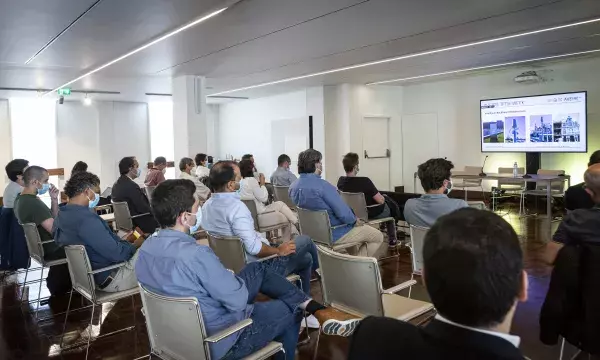
This latest edition of the Aveiro Tech Week has been a great success for all organizers, sponsors and partners involved. Approximately 13 thousand visits were counted in the various events that made up the very rich calendar of the week.
Just to make some examples: tech sessions hosted, in 3 different sessions, 16 speakers, 459 participants on site and 819 remotely; workshops were held thanks to 7 cohosting partners and 186 participants on site and 990 remotely were counted. 14 startups took part to the public space expo and met approximately 120 participants. Thanks to PRISMA 25 artists were involved, coming from 9 different countries and putting together 13 installations; CRIATECH counted almost 9k visitors, involved 40 artists coming from 12 different countries that produced 25 installations. This week reconfirms to be an important appointment for the innovation ecosystem of the city of Aveiro and represents, every year more, an event with an international echo, capable of projecting the city into a global dimension and turning the spotlight on it.
About this resource
The Urban Innovative Actions (UIA) is a European Union initiative that provided funding to urban areas across Europe to test new and unproven solutions to urban challenges. The initiative had a total ERDF budget of €372 million for 2014-2020.
Similar content
